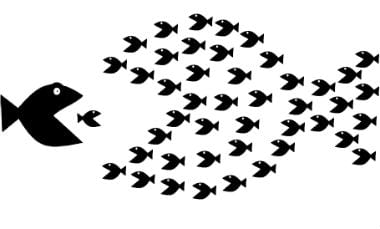 Are we entering the era of the customer-run business? Well, no, not literally. But it was clear from a good number of discussions and talks at the Service Council Executive Symposium, which concluded Wednesday, that businesses are just now starting to understand the value of their customers.
Are we entering the era of the customer-run business? Well, no, not literally. But it was clear from a good number of discussions and talks at the Service Council Executive Symposium, which concluded Wednesday, that businesses are just now starting to understand the value of their customers.
That may sound like a silly statement, but it’s not. Speaker after speaker here spoke about the value of re-shaping organizations — whether they involve field service or sales — to focus on turning customers into brand advocates and resources. A second element of that is to leverage the most possible out of the employees who work most closely with those customers every day.
“Some of the best things that are happening in your business are happening close to the customer,” James Mylett said during his presentation to close out the conference.
Knowledge is in the trenches
Mylett is the vice president and general manager of field and business operations for Johnson Controls, a $40 billion global company that has holdings in dozens of sectors. So that’s a pretty profound statement, considering Mylett himself is unlikely to interact with the people at the lowest levels of his own organization. But he also knows he doesn’t interact directly with customers.
 His talk centered on why big companies should pull back and take a look at what’s working on a micro-level at different plants, or in different divisions of a service organization. Companies should find out what outstanding employees or high-performing divisions are doing, break down why their tactics are succeeding, and then create new benchmarks to recreate the performance and start spreading it across the organization.
His talk centered on why big companies should pull back and take a look at what’s working on a micro-level at different plants, or in different divisions of a service organization. Companies should find out what outstanding employees or high-performing divisions are doing, break down why their tactics are succeeding, and then create new benchmarks to recreate the performance and start spreading it across the organization.
He used a simple, stark equation to explain why this mattered to field service organizations: Mylett said Johnson’s field service division has 4,000 techs, each of whom work about 2,000 hours per year at a (hypothetical) rate of $50 per hour, adding up to a $400 million annual cost. Mylett pointed out that a 10 percent increase in operational efficiency, be it from smarter scheduling, better training or improved performance, adds up to a $40 million savings. That’s a lot of money.
And most of the tactical ways service organizations can improve performance come from the bottom up. Management’s role is simply to recognize those tactics and find a way to turn them into common practice throughout the company. Again, the innovation and actual tactics often come from the lowest rungs of the organization — the people closest to the customers.
Message reverberating
That idea dove-tails nicely with a talk Sears Home Services president Stu Reed gave on Tuesday. Reed and his organization pegged customer service at the point of contact — be it field techs, call center employees, or something else — as the primary driver for growth.
“If I can delight (customers), own the customer relationship and get them to come back and tell their friends, I don’t need marketing,” Reed said.
It was a nice nod to the crowd that wasn’t at the show — the techs in the field — and an acknowledgement by a pair of top executives that the heart and soul of service organizations isn’t in the executive suite, but rather is most likely digging through a toolbox in the back of a van.
More: Putting a Value on Face-to-Face Customer Service.
Click here to download a free whitepaper, “Five Steps to Make Field Service Profitable.”

Thanks for sharing, I believe James was spot on!